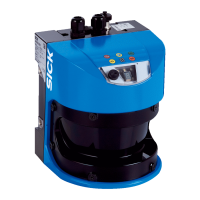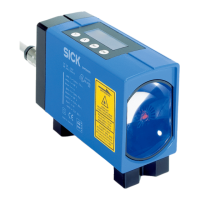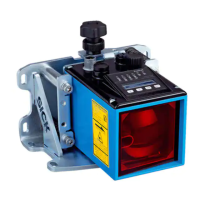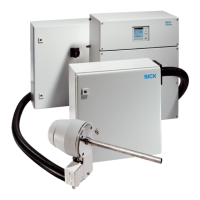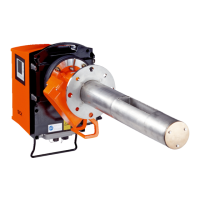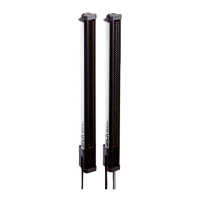What to do if SICK Measuring Instruments displays an error message because the probe is not available?
- CCathy JohnsonSep 8, 2025
If the SICK Measuring Instruments displays an error message because the probe is not available, check the probe.
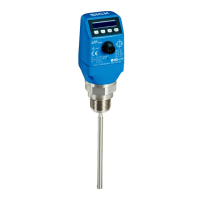
What to do if SICK Measuring Instruments displays an error message because the probe is not available?
If the SICK Measuring Instruments displays an error message because the probe is not available, check the probe.
What to do if SICK Measuring Instruments displays an error message because of Foam-CalEmp or FoamCalMed menu item failure?
If the SICK Measuring Instruments displays an error message because the Foam-CalEmp or FoamCalMed menu item failed, follow the foam commissioning instructions.
What to do if SICK Measuring Instruments displays an error message due to short-circuit at the output?
If the SICK Measuring Instruments displays an error message and the cause is a short-circuit at the output, remove the short-circuit.
How to resolve error message on SICK LFP CUBIC due to incorrect probe length configuration?
If your SICK Measuring Instruments displays an error message because the probe length configured incorrectly, check probe length and compare against configuration in EXPRT-Config-LENGTH.
What to do if SICK LFP CUBIC Measuring Instruments displays an error message because a parameter was written outside of the valid value range?
If the SICK Measuring Instruments displays an error message because a parameter was written outside of the valid value range, rewrite the value in the valid range.
What to do if SICK LFP CUBIC Measuring Instruments displays an error message due to AutCal failure?
If the SICK Measuring Instruments displays an error message because AutCal failed, repeat commissioning.
Why does my SICK LFP CUBIC Measuring Instruments display an error message after changing probe length?
If the SICK Measuring Instruments displays an error message because the probe length, teach-in depth or measuring mode was changed, perform commissioning again if necessary.
What to do if SICK LFP CUBIC Measuring Instruments displays an error message because of interference/pulse?
If the SICK Measuring Instruments displays an error message because the interference/pulse exceeds value for MaskTr, increase MaskTr or identify and eliminate interference.
How to fix an error message on SICK Measuring Instruments caused by an unsuitable TrsHld setting?
If your SICK Measuring Instruments displays an error message because the TrsHld setting is not suitable for the medium, perform advanced commissioning.
What to do if SICK LFP CUBIC displays an error message due to low supply voltage for switching outputs?
If the SICK Measuring Instruments displays an error message because the supply voltage is too low for switching outputs, increase the supply voltage to achieve the desired functionality.
| Brand | SICK |
|---|---|
| Model | LFP CUBIC |
| Category | Measuring Instruments |
| Language | English |
Provides important notes on using SICK AG sensors and prerequisites for safe work.
Explains that instructions apply to all device variants and how to identify them.
Details symbols used for warnings and important information in the document.
Directs users to the online product page for additional documentation and resources.
Provides contact information for technical support and advice.
Describes the sensor's design for continuous and point level measurement in liquids.
Defines uses outside specified areas or technical specifications as incorrect.
States manufacturer's non-liability for damages caused by misuse or non-compliance.
Warns against modifications; invalidates warranty and requires prior approval.
Outlines qualifications and training needed for safe operation and installation.
Highlights the importance of safety notes and warnings to reduce risks.
Includes notes on reading instructions, firmware validity, and safety regulations.
Specifies that repairs must be performed by qualified SICK AG personnel only.
Details information printed on the housing identifying the sensor and its electrical connection.
Describes the device view, including probe, connection, buttons, and display.
Explains the TDR technology principle and sensor output capabilities.
Provides safety notes for proper packaging and handling during transport.
Guides on checking delivery for completeness and transit damage.
Specifies conditions for storing the device, including dry area and avoiding shocks.
Details mounting requirements, distances, and considerations for various container types.
Refers to separate operating instructions for mounting the coaxial tube.
Explains procedures for shortening or replacing probes, including length configuration.
Provides specifications and procedures for customer modification of the probe rod.
Highlights important notes on electrical installation, voltage, and working with live parts.
Describes connecting the sensor using M12 connectors and pin assignments.
Outlines steps for basic commissioning under reference conditions.
Details advanced commissioning for challenging applications or conditions.
Provides specific instructions for commissioning in applications with significant foam buildup.
Explains how to navigate menus and operate the sensor using its display and buttons.
Details setting up switching outputs with hysteresis and window functions.
Guides on configuring analog output signals, including automated detection and inversion.
Covers expert mode, filtering, signal limits, evaluation methods, and probe length settings.
Lists common error messages, their causes, and possible solutions.
Explains issues related to the display not showing expected information.
Troubleshoots issues with switching or analog outputs not behaving as expected.
Describes common error behaviors like incorrect level readings and fluctuating values.
Recommends regular checks for probe contamination and connections.
Provides guidelines for cleaning devices before return and the need for a return form.
Lists key features like medium type, detection type, probe length, and certifications.
Specifies accuracy, reproducibility, resolution, response time, and other performance metrics.
Details materials in contact with media, housing, process connection, and enclosure rating.
Defines standard conditions for measurement accuracy, including container size and medium.
Specifies the operating and warehouse temperature ranges for the device.
Lists supply voltage, current consumption, initialization time, and output signal specifications.
Provides graphical representation and data for measurement accuracy in different container types.
Shows detailed dimensions and measurement ranges for the rod probe version.
Illustrates dimensions and measurement ranges for the cable probe version.
Presents dimensional information for the LFP Cubic with a remote amplifier.

